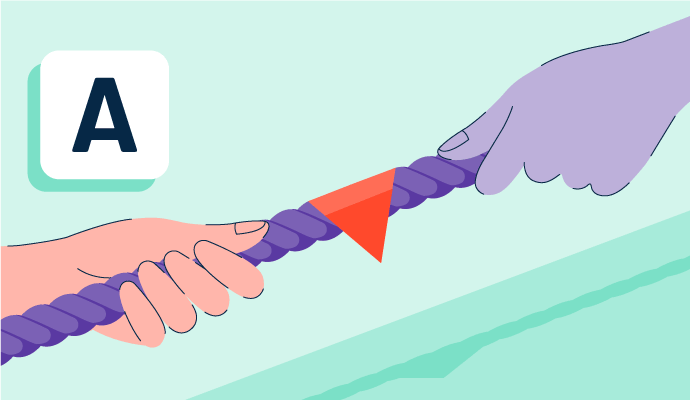What is asymmetric information?
Asymmetric information, sometimes referred to as information failure or information asymmetry, is when one individual or party in an economic transaction possesses more material knowledge than the other individual or party involved. This usually happens when the seller of goods or services has greater knowledge than the buyer.
Sometimes sellers take advantage of buyers when asymmetric information exists. Economists view asymmetric information as the desired market economy. For instance, when it comes to skilled labor, workers should specialize in a trade, excel at this trade, and then provide greater value to other individuals in different trades.
In order to get a handle on asymmetric information, consumers and potential business associates can use online reputation management software to monitor reviews, learn from negative experiences, and investigate the brand of an organization before continuing to move forward with a business transaction.
Example of asymmetric information
Since asymmetric information is a tricky concept to grasp, it’s helpful to think of a car owner selling their used car. In this example, the car owner will have more information about the car than the buyer. They know the passenger-side window sticks, the brake lights need replacing, and the tires are dull.
This is all information that the car buyer wouldn’t know until they've already made the purchase. The buyer could feel like they paid too much for the car or that they shouldn’t have bought it in the first place.
Beyond this example, asymmetric knowledge can be found in various other industries, like healthcare. Doctors know more about medical practices and various illnesses than their patients, but this works to everyone’s advantage. The same can be said for teachers, accountants, police officers, lawyers, and fitness instructors in their respective fields.
Types of asymmetric information
There are two main types of asymmetric information. These types, plus supporting examples, are:
- Adverse selection: This type happens when sellers have more and better information about the product than the buyer or vice versa. Because information is lacking, bad decisions occur. To avoid an adverse selection, one party will charge more money or provide additional services. An example is an insurance company charging a higher premium to a company in a risky industry.
- Moral hazards: This is when one party negatively changes its behavior after a deal has been closed. An example of a moral hazard is a homeowner who installs a home security system. Before this, this homeowner was extremely careful and always locked the doors. Now, the door is always left unlocked because the homeowner has a security system.
Benefits of asymmetric information
Even with asymmetric information attributing to unequal knowledge between parties, there are still benefits. Some include:
- Increased knowledge between experts. Asymmetric information can lead to individuals reaching levels of expertise in their specific niche. For example, doctors, teachers, and architects will typically have advanced knowledge within their fields to be at the top of their game.
- Enhanced productivity. This method typically enhances the level of productivity of certain professionals because they know their customers and clients are reliant on them for this specific information.
- Healthy market economy: Growing asymmetric information is considered the desired outcome of a healthy market economy. When various workers aim to be more specialized in their specific fields, they become more productive and provide greater value.
Disadvantages of asymmetric information
The nuances of asymmetric information sometimes lead to challenges. Some include:
- Fraudulent activities: Asymmetric information can lead to fraudulent behavior when the party with better information chooses to cause significant damage to other parties.
- Increased cost of goods: In a standard economy breakdown, asymmetric information can cause the price of goods and services to increase. If a party knows a loss is possible in the future because of a lack of proper information, they may adjust pricing during the negotiation to account for that theoretical loss.
- Likelihood of moral hazard: Even after a deal is done, one party can still change their behavior because of a moral hazard, which will ultimately hurt the other party.
- Monopoly of knowledge: This occurs if only a few parties have the necessary information to understand the situation to make an informed decision.
To lessen the likelihood of experiencing these disadvantages, both parties must use two-way dialogue, precise paperwork, and honest communication, with the hope that everyone reaches fair decisions.

Mara Calvello
Mara Calvello is a Content and Communications Manager at G2. She received her Bachelor of Arts degree from Elmhurst College (now Elmhurst University). Mara writes customer marketing content, while also focusing on social media and communications for G2. She previously wrote content to support our G2 Tea newsletter, as well as categories on artificial intelligence, natural language understanding (NLU), AI code generation, synthetic data, and more. In her spare time, she's out exploring with her rescue dog Zeke or enjoying a good book.


